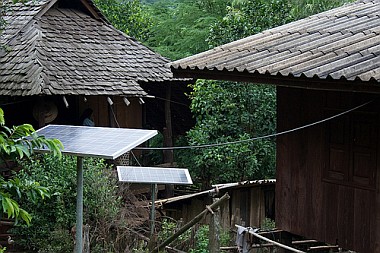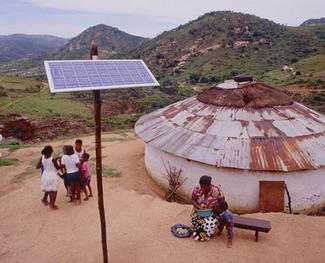

The work being done by Suomen Latu in
As it was often highlighted throughout the various lectures in the SGT courses, involving the native people in the planning & implementation processes plays a vital role in the successful execution of any development project.
Obviously, most development projects (during their inception phase) are planned to take into account the local people but a significant number of them somehow fail to put into practice this crucial part during the actual work on the ground.
In the case of our project, if NSN decides to deploy solar-driven Village Connection solution in the near future, it’s highly important to gather as much information as possible from the villagers living in different parts of the world (wherever NSN offers its system) about their requirements.
Each community will have its priority needs. So, developing a host of additional solutions based on experiences and allowing the villagers to choose the service that most fulfills their urgent need may be one approach to make sure that the service provided is of practical benefit to the community.
 This is a small refrigetor for medicine that is portable, most efficient and uses less energy.
This is a small refrigetor for medicine that is portable, most efficient and uses less energy. ** Similar project under trial in Italy **
** Similar project under trial in Italy **Another interesting story from Uganda.
Telecom service provider Celtel teamed up with Ericsson to reduce energy costs in its Ugandan telecom market by opting for a hybrid energy solution that comprises diesel power and battery.
Prior to this, the required power to operate every remote mobile base station was supplied from two diesel generators that work alternatively.
The driving force behind this move is the running cost of diesel and other costs related to site visits for re-fuelling and maintenance. The solution offered by Ericsson involves replacing one of the generators with a special battery bank. This results in as much as 50% savings for the telecom operator and also a positive environmental impact.
This is a quite encouraging experience. In the case of NSN, if they can successfully deploy a fully solar-powered solution, then the savings thus achieved will be even more.
* On a side note, I just finished working on the 'green energy' part of the final report. Thoughts/comments at Google Docs. What about the other topics already split in the first round of tasks?
It's quite interesting to observe that a lot of debate is going on out there whether nuclear can be considered as a clean (hence green) technology or not.
It's known that nuclear power does not produce green house gases as a direct consequence of power production, which means it can possibly provide a good alternative to conventional energy sources like fossil fuels.
However, dealing with used nuclear fuel remains a major concern. So how green is nuclear technology?
Food for thought.
http://www.gemrefrigeratorcompany.com/vaccine_port_mt27.php?f=vaccine
We were thinking of rechargeable lamps also. Such appliances consume very little power and seem to be well-suited for our system. A typical rechargeable lantern with U-tube lamp that operates with just 7W is shown below -

- How we can access the Design Factory facility
- what are the intended users of our manual
-
Today's, Sustainable Buildings in Finland, Eco Viiki case, showed me how sustainability projects can account for the factors related to it, directly or indirectly. He included how Motiva is working with
The two main points raised were of course finally explained by Marko, Time and Change. Its is not unexpected through time, pretty new technologies, cheap and more easy will come to serve in place of projects like Sustainable Building, and infact our project - Innovative Solar Power for Remote Communities. But starting with an inclusive and best design will not end up too costy for change as well.
Although most of Motiva's projects may not be achieved in short term, they have set some standards, as a success criteria - the concept of certificates, that is another good point for those working in project implementation.
I just checked our midterm report card.The results we got for our project plan and the workshop are quite encouraging!
There is a note on group work which says "it's good to check that each team member has equal role, influence and workload in the group". I guess the workloads are evenly distributed among the team members and the fact that we are reviewing individual tasks every week will ensure that it will be the case till the end of the project.

 Link to the webpage: http://www.ikea.com/us/en/catalog/products/40125786
Link to the webpage: http://www.ikea.com/us/en/catalog/products/401257862. Actual Workshop

"When one thinks of solar panels, we imagine huge, black panels that stick out like a sore thumb.
SRS Energy has come up with an ingenious invention to combat this issue. The Solé Power Tiles™ are dark blue, and the contours match the undulations of typical clay roof tiles. The Solé Power Tile™ brings the luxurious style and classic durability of clay roofing into the modern era of sustainable energy."


(source: Science daily)















